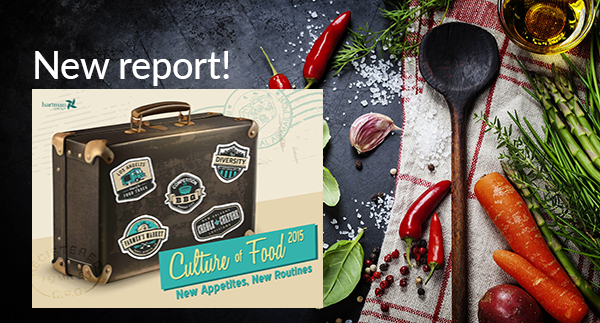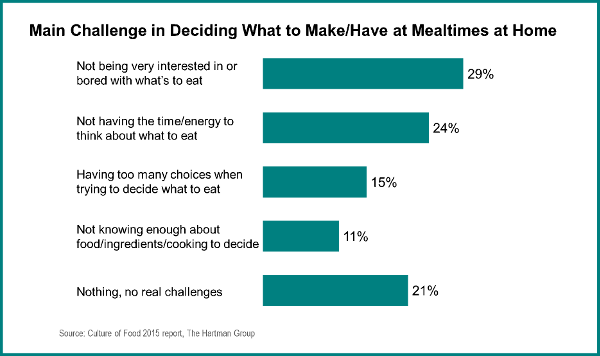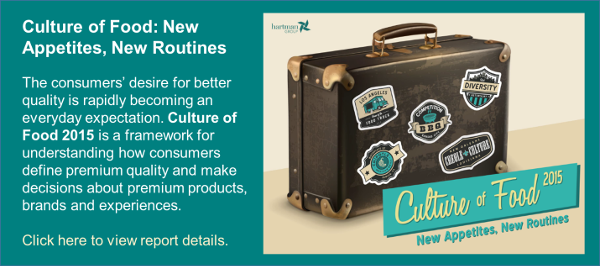Modern Cooking: Welcoming Food Back to the Center of Everyday Life
In an iconic yesteryear, memorable family meals began with Mom doing all the meal planning, shopping and cooking. Mom was in control of what we ate, when we ate and how we ate. In-between meal snacking was discouraged, and for the most part we were relegated to a three-meal-a-day regimen by which we could set our internal clocks.
Move the clock ahead to today’s household environments and we find a food cultural renaissance where consumers are trading out traditional food routines for new ones that reflect the desires and challenges of expanded variety in a complex food landscape.
The Hartman Group’s new report, Culture of Food: New Appetites, New Routines, reveals that fundamental shifts in technology, travel and trade have placed food back at the center of everyday life and popular culture. Food is fun and important. Interest in food isn’t a mere Millennial generational trait or the domain of Mom but a reflection of an evolving food culture encompassing all consumers.
Within the context of a changing food culture, we find that new routines necessitate new ways of cooking. Cooking is becoming a skill consumers aspire to develop, not just a domestic (previously gendered) chore. Cooking today is seen as a basic life skill, cultural capital, geek exploration, life passion and participation in “fresh as less processed and transparency.” This is not to say consumers want to cook all the time but that they want to have the choice to cook or to outsource cooking to food companies, retailers and food service.
New routines are inspiring new paths to cooking (not just Mom), including:
- Cooking driven by necessity
- Having parents who don’t cook
- Becoming vegetarian
- Wanting to eat more healthily
- Leaving home (college, work)
- Starting a family
Consumers are also expanding cooking skills and variety by:
- Eating out and exploring new and interesting cuisines
- Cooking with friends from diverse food backgrounds or watching Mom, Grandma or Dad cook
- Researching recipes online, reading cookbooks and sharing food ideas with social networks, or following innovative chefs
- Shopping at farmers markets, seeking specialized ingredients, using meal kits and shopping at specialty retailers
- Taking cooking classes (even when traveling abroad)
An appetite for fresh and interesting foods is inspiring consumers to learn about new ingredients, flavor combinations and cooking techniques. Rather than help with planning and list making, they are looking for food inspiration and cooking tips to simplify or improve their investment of time, effort and money.
Consumers most intensely engaged with broader food culture are able to navigate the complex and dynamic food landscape with greater ease and fun. However, a vast majority of consumers are seeking inspiration, information, skills, tips and a little help.
In the days ahead, solutions to the consumer desire for variety must avoid complexity in order to achieve mainstream adoption. Mainstream consumers desire expanded variety in their cooking and eating routines, but they lack support to achieve it. Such moderately involved consumers fear that variety adds to their food-prep burdens, and they lack the planning structure and culinary fluency that those more engaged in food have mastered.
To avoid simply adding to consumer anxiety, offers to “try something new” should be offset by a convenience or skill-building benefit. Similarly, instead of a constantly changing menu, meal-planning services should modestly extend the consumer’s repertoire and rotation of familiar meals and allow for regular reliance on fresh-prepared or takeout to fill in home-based food-prep gaps.



